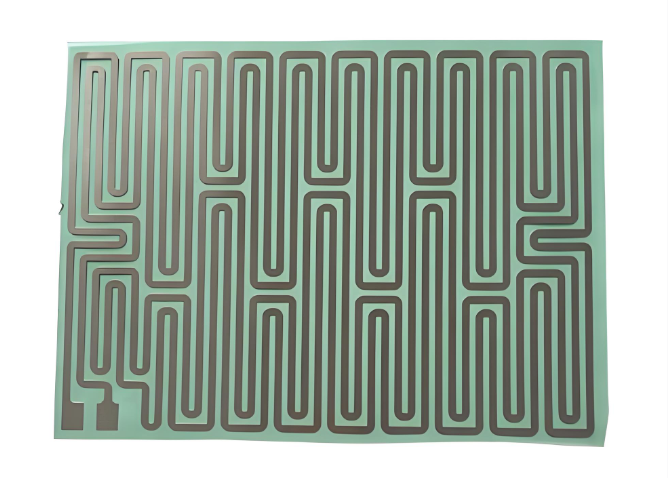In today’s electronics and industrial applications, space is at a premium. That’s why ultra thin flexible heaters are increasingly popular. These heaters provide efficient, uniform heat in a slim, adaptable form factor.
From medical devices and battery warming to 3D printers and laboratory instruments, ultra thin flexible heaters are designed to fit where rigid heating elements cannot. This guide explores their types, applications, selection tips, and highlights the top flexible heaters manufacturers in Asia.

An ultra thin flexible heater is a lightweight, bendable heating element capable of delivering precise heat over a surface. They are constructed from resistive wires or etched foil embedded in flexible substrates like polyimide (PI), silicone rubber, PET, or transparent films.
The primary advantages are:
These heaters are often referred to as electric ultra thin flexible heaters due to their resistive electric heating principle.
There are several types of ultra thin flexible heaters, each suited for different environments and applications.
Polyimide (PI) Flexible Heater
Silicone Rubber Heater
Transparent Heater
PET Heater

Thickness varies by material and application:
| Material | Typical Thickness | Maximum Temperature |
| Polyimide (PI) | 0.05–0.15 mm | 200°C |
| Silicone Rubber | 1–2 mm | 200°C |
| Transparent | 0.1–0.2 mm | 100°C–150°C |
| PET | 0.05–0.15 mm | 120°C |
The thinner the heater, the faster it heats and adapts to tight spaces. However, extremely thin heaters require careful handling and precise installation to avoid tearing or hot spots.
Selecting the proper heater depends on several factors:
A flexible heater with thermostat or temperature sensor can improve safety and maintain consistent performance.
Ultra thin flexible heaters are versatile across multiple industries:
Asia is home to some of the world’s leading flexible heaters manufacturers, offering a wide range of solutions from standard silicone heaters to ultra thin polyimide and transparent designs. Here’s a closer look at the top five:
1. Danyu Electronics (China)
Overview: Danyu Electronics is a professional manufacturer specializing in ultra thin flexible heaters, including polyimide (PI), silicone, PET, and transparent heaters.
Specialties:
Advantages:
2. Minco Asia (China & Hong Kong)
Overview: Minco Asia has a long history of producing precision flexible heaters and thermal solutions for electronics and industrial equipment.
Specialties:
Advantages:
3. Omega Engineering (Asia Branch, Singapore & China)
Overview: Omega Engineering is a global brand with a strong presence in Asia, providing electric ultra thin flexible heaters for various industries.
Specialties:
Advantages:
4. Korea Heating Elements Co. (South Korea)
Overview: Korea Heating Elements specializes in flexible silicone and polyimide heaters for automotive, medical, and battery warming applications.
Specialties:
Advantages:
5. Shenzhen Jiayi Electronics (China)
Overview: Shenzhen Jiayi Electronics focuses on affordable, high-performance flexible heaters, making them popular among startups and mid-sized industrial companies.
Specialties:
Advantages:

Danyu Electronics stands out among flexible heaters manufacturers for its:
Whether you need standard heaters or highly specialized designs, Danyu Electronics ensures optimal performance and rapid delivery.
1. What is the thinnest flexible heater available?
The thinnest heaters are polyimide (PI) and PET types, often as slim as 0.05 mm. These are suitable for tight spaces and lightweight electronics.
2. Can ultra thin flexible heaters be cut to size?
Only if designed for cutting. Some heaters have cut lines marked for safe trimming. Otherwise, altering the heater can damage the resistive elements and cause failure.
3. What voltage options exist for these heaters?
Common voltages include 12V, 24V, 48V, and 110–220V AC. Low-voltage heaters are safer for consumer devices, while high-voltage versions suit industrial equipment.
4. Are transparent flexible heaters durable?
Yes, but they require careful handling. Transparent heaters using ITO coatings can be scratched or broken if bent sharply. Proper mounting and protection are crucial.
5. Why should I choose a flexible heater with thermostat?
A thermostat prevents overheating, improves energy efficiency, and extends the heater’s lifespan. It’s essential for sensitive devices and applications with precise temperature control.
Simply drop your email or phone number in the contact form, and we'll promptly reply you shortly.